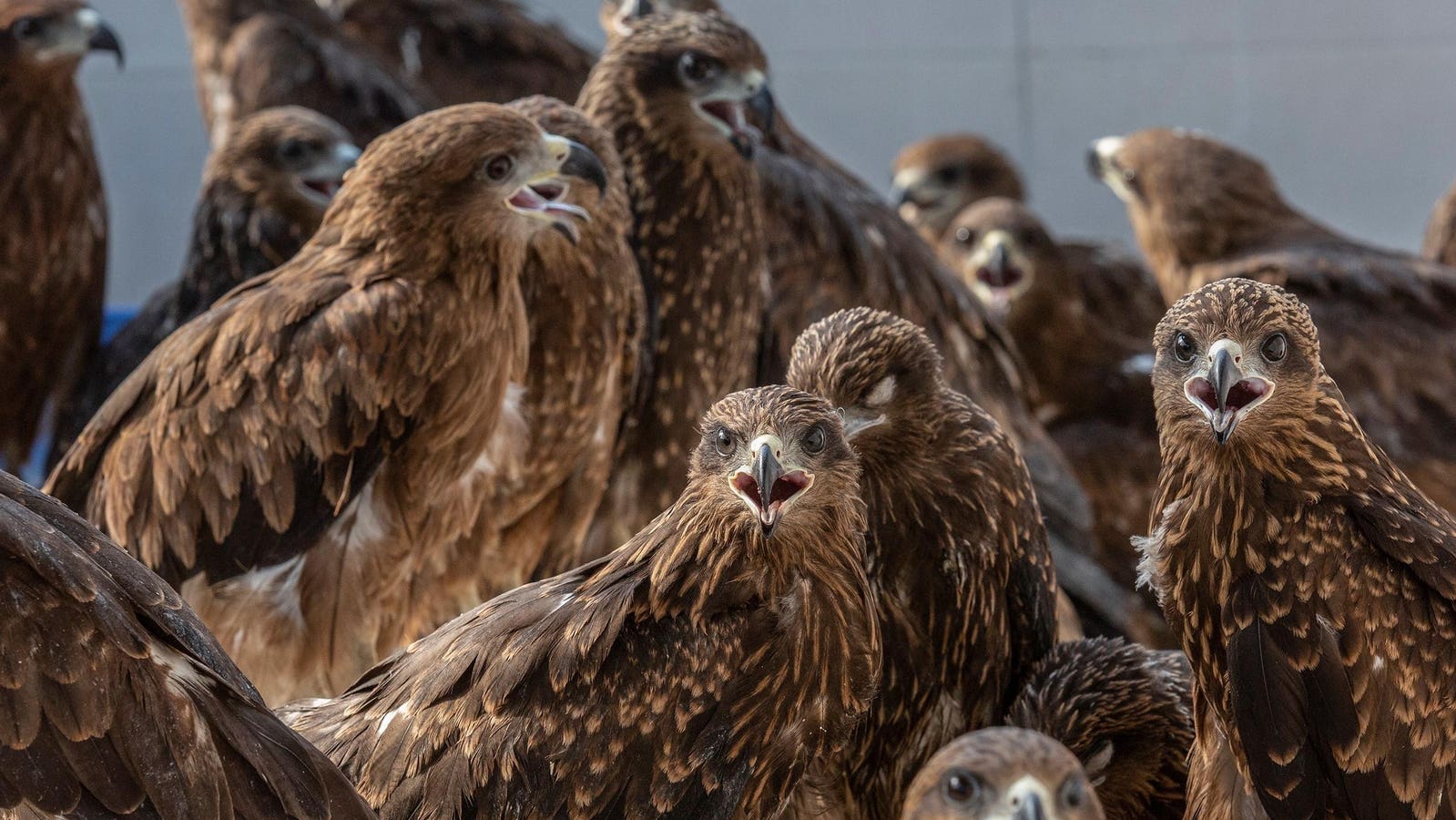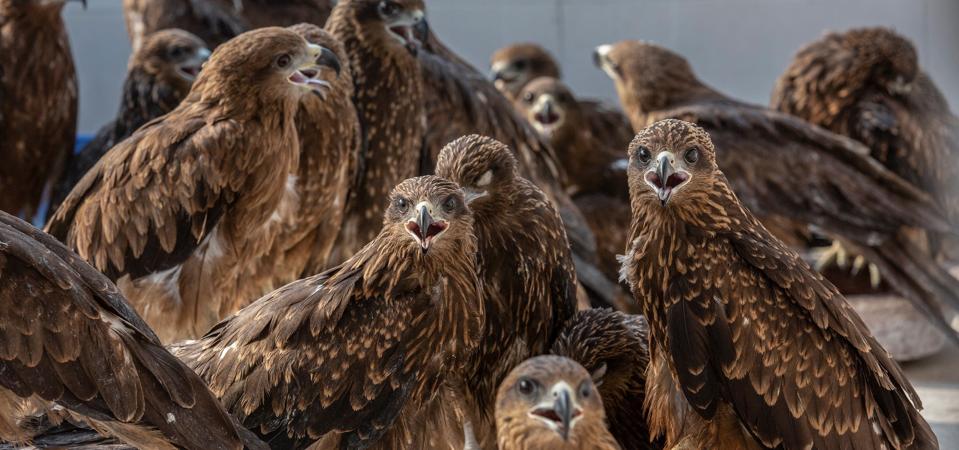Raptors, also known as “birds of prey,” are not nearly as common as their less confrontational … More
Generally speaking, there are three groups of raptors. One is “accipitriformes.” These are diurnal (daytime) raptors and include hawks, eagles, kites, vultures and harriers. There’s also “strigiformes.” These are nocturnal (nighttime) raptors and include all species of owls. Then there’s “falconiformes.” This class comprises all falcon species – which, although also diurnal, are genetically distinct from eagles, hawks and the other accipitriformes.
Some ornithologists might get fancier with their raptor classifications – possibly further subdividing these to highlight the evolutionary uniqueness of new world vultures, the secretarybird and the osprey – but the delineation above works as a general rule of thumb.
Remember, what separates raptors from all other bird species is their carnivorous diet and hunting ability, including sharp talons, hooked beaks, keen eyesight and powerful flight muscles. However, these traits don’t necessarily reflect shared ancestry. For example, falcons are more closely related to songbirds than to other raptor lineages.
Of all of these raptor species, the most abundant is the black kite. Here’s the story of the world’s most common bird of prey.
(Sidebar: Fascinated by remarkable birds? See here to meet the world’s rarest eagle, and here to learn about the oldest known bird still alive today.)
The Black Kite – The Most Common In A Class Of Rarities
Black Kite (Milvus migrans).
Abundant, adaptable, and widespread, the black kite (Milvus migrans) is a unique raptor. While many birds of prey are elusive, rare, or highly specialized, black kites thrive across a variety of environments, with an estimated population of more than 5 million individuals worldwide. That makes them the most numerous raptor on the planet.
You won’t find black kites in the Americas, however. Their range covers much of Europe, Asia, Africa and Australia.
Black kites belong to the family Accipitridae, which also includes hawks, eagles, harriers and other kites.
They inhabit a variety of environments, from open countryside and wetlands to urban areas. In cities, they are often seen soaring above garbage dumps, marketplaces and riverbanks, scavenging for scraps and small prey. This opportunistic feeding strategy sets black kites apart from more specialized raptors that rely primarily on hunting live prey.
Their diet is famously varied: carrion, small mammals, insects, fish, reptiles and even stolen food from other birds. They are known for their intelligence and nimbleness, often stealing food mid-air from other birds, a behavior called kleptoparasitism.
According to a 2008 study published in the Journal of Raptor Research, black kites at a landfill in Rome relied heavily on kleptoparasitism to get their meals – stealing food in more than 75% of observed feeding attempts. Most thefts targeted gulls, which were abundant and easy to rob, though kites also stole from each other. Researchers found that this strategy became more common and effective as kite numbers grew, especially later in the breeding season.
Unlike many raptors that are solitary or live in pairs, black kites are often highly social. They congregate in large groups, especially at roosting sites where thousands may gather to rest overnight. These communal roosts provide safety in numbers and opportunities for social learning.
During migration, black kites form large flocks, sometimes numbering in the thousands. These spectacles are a favorite among birdwatchers worldwide.
Black kites share the hallmark raptor features that make birds of prey such efficient hunters. They have sharp, curved talons and hooked beaks designed for tearing flesh. Their eyesight is exceptionally keen, capable of spotting small prey or carrion from high in the air.
Their long wings and forked tail give black kites exceptional maneuverability, allowing them to ride thermal currents for hours and conserve energy during long-distance travel. Thanks to their global abundance and wide distribution, they provide a valuable model for studying population structure and variation in migratory behavior across a broad geographic range.
A black kite in flight. Some populations migrate thousands of kilometers between breeding and … More
According to research published in Ethology Ecology & Evolution and the Journal of Avian Biology, their movement patterns vary across regions, with some Palearctic populations migrating long distances while others, particularly in India and Australia, remain year-round residents. GPS tracking has confirmed that individuals from northern Asia overwinter in South and Southeast Asia, while tropical populations tend to stay put.
These regional differences are reflected in their genetics. DNA analyses show that populations from Europe, northern Asia, India, and Australia carry distinct haplogroups, suggesting historical separation and limited gene flow. A 2024 Zootaxa study found that Indian and Australian kites likely diverged at the end of the last Ice Age and no longer share haplotypes. Meanwhile, African populations, especially the yellow-billed kite, are genetically distinct enough that many researchers now consider them a separate species.
Altogether, these findings point to a complex evolutionary history shaped by geography, climate shifts, and variable migration strategies.
While many raptors face threats from habitat loss, pollution and persecution, the black kite has so far maintained stable populations across much of its range. Its ability to exploit human-altered landscapes has certainly helped.
Their success story offers a striking contrast to the fate of many other raptors, which often decline in the face of urbanization. The black kite stands out as a reminder that adaptability is a powerful survival strategy. They may not be the rarest or most iconic raptor, but in terms of resilience, global reach, and sheer numbers, no other bird of prey comes close.
Are you an animal lover who owns a pet, perhaps even a pet bird? Take the science-backed Pet Personality Test to know how well you know your little friend.









